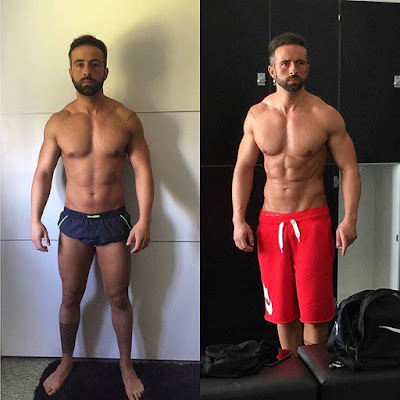The majority of adult Americans are overweight or obese, according to the American College of Sports Medicine. The small amount that are at a healthy weight may have a lower risk of disease and improved function, but that doesn't mean they don't have problem areas. If you are skinny but still have belly fat, you can reduce it with a healthy eating plan and exercise.
1- Body Fat vs. Body Weight
There is a difference between body weight and body fat. Your body weight can be considered healthy for your height according to your body mass index, or BMI, but you may have excess body fat or carry extra fat in one area, such as your stomach. The average, acceptable amount of body fat for health is 10 to 22 percent and 20 to 32 percent for men and women, respectively. Excess body fat, especially in the stomach, increases your risk of diseases such as type II diabetes, coronary heart disease and stroke.
Cardiovascular exercise will help you decrease the fat in your belly by burning calories. Perform cardio three to five days per week for 20 to 30 minutes for moderate fat loss. Keep your intensity moderate to high for the most benefit to your health and changes to your body. You can do any activity that you enjoy, such as walking, jogging, cycling, elliptical or even group fitness classes. Vary your activities to stay challenged in your efforts to reduce belly fat.
3- Abdominal Training:
Your abdominal muscles are working all the time as a spinal mover and/or stabilizer. Because of this they are resistant to fatigue and you can exercise them everyday to help flatten and tone your stomach. A study sponsored by the American Council on Exercise determined the effectiveness of common abdominal exercises based on muscle fiber recruitment. They found that the captain's chair, bicycle maneuver, exercise ball crunch and reverse crunch were a few of the most challenging exercises. Focus on your form instead of number of repetitions and work your abs for approximately five minutes every day.
•Diet Recommendations:
If you are at a healthy weight, focus your dietary changes on what you eat and not on reducing your caloric intake. Eat whole grains over processed carbohydrates such as white bread or baked goods. Include fresh fruits and vegetables over canned foods. Choose lean sources of protein that are baked or grilled, and limit saturated fats such as butter or margarine. Drink at least 64 ounces of water each day to prevent dehydration.





















